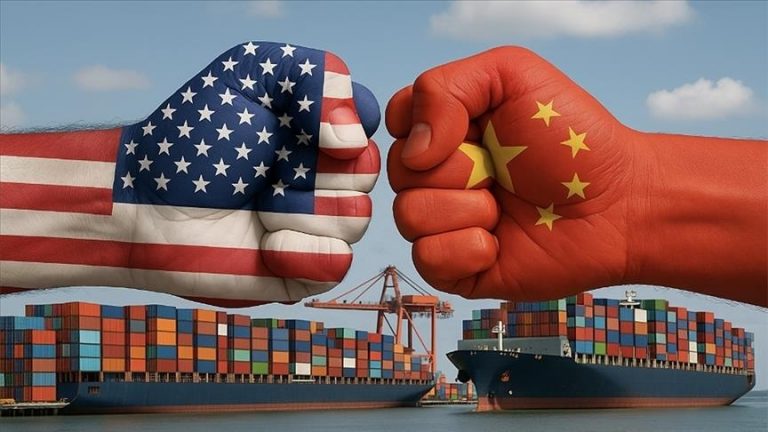
U.S. Treasury Secretary Scott Bessent stated on May 30, 2025, that trade negotiations with China are “a bit stalled” and may require direct involvement from President Donald Trump and Chinese President Xi Jinping to move forward. This follows a temporary trade truce agreed upon earlier in May 2025 in Geneva, where both nations reduced tariffs for 90 days—U.S. tariffs on Chinese goods dropped from 145% to 30%, and China’s tariffs on U.S. goods fell from 125% to 10%. Despite initial progress, Bessent indicated the complexity of the issues necessitates further high-level discussions, with more talks expected in the coming weeks.
The stalling of U.S.-China trade negotiations, as noted by Treasury Secretary Scott Bessent, carries significant economic and geopolitical implications, with a clear divide in priorities and approaches between the two nations. The temporary trade truce in May 2025 reduced tariffs (U.S. from 145% to 30%, China from 125% to 10% for 90 days), providing short-term relief to global supply chains and markets.
However, stalled talks risk renewed tariff escalations, potentially disrupting trade flows, increasing costs for consumers, and affecting industries reliant on U.S.-China trade like electronics, agriculture, and manufacturing. Prolonged uncertainty could dampen business investment and consumer confidence. Higher tariffs, if reimposed, may raise prices for U.S. consumers and strain exporters like farmers facing Chinese retaliatory tariffs.
Register for Tekedia Mini-MBA edition 19 (Feb 9 – May 2, 2026): big discounts for early bird.
Tekedia AI in Business Masterclass opens registrations.
Join Tekedia Capital Syndicate and co-invest in great global startups.
Register for Tekedia AI Lab: From Technical Design to Deployment (next edition begins Jan 24 2026).
China faces pressure from potential U.S. tariffs on its exports, which could exacerbate domestic economic challenges, including property sector woes and slower growth. However, China’s retaliatory measures could further limit U.S. market access for American firms. Other nations, like the EU and ASEAN countries, may face pressure to align with either the U.S. or China, complicating global trade dynamics and potentially fragmenting supply chains further.
The stall reflects deeper mistrust, with both sides leveraging trade as a tool in a broader strategic rivalry. This could escalate tensions in areas like technology (e.g., semiconductors) and regional influence (e.g., South China Sea). Bessent’s call for direct Trump-Xi talks underscores the need for high-level political will to break the deadlock, but differing leadership styles—Trump’s aggressive deal-making versus Xi’s focus on long-term strategic goals—complicate negotiations.
The U.S. may push allies to adopt stricter trade policies against China, while China could deepen ties with Global South nations to counter U.S. influence. Investors are likely to remain cautious, with stock markets, commodity prices (e.g., soybeans, tech components), and currencies like the yuan and dollar sensitive to trade talk outcomes. A failure to extend the truce could trigger sell-offs.
U.S. seeks to reduce trade deficits, protect intellectual property, and curb China’s dominance in critical sectors like tech and manufacturing. The U.S. pushes for enforceable commitments, viewing China’s subsidies and state-driven economy as unfair. China prioritizes economic stability, technological self-reliance (e.g., Made in China 2025), and maintaining export-driven growth. China resists U.S. demands for structural reforms, seeing them as infringing on sovereignty.
U.S. employs aggressive rhetoric and tariff threats, with Trump’s “America First” approach aiming to pressure China into concessions. Bessent’s comments suggest a reliance on top-level deal-making to bypass bureaucratic gridlock. China adopts a patient, long-term stance, using retaliatory tariffs and diplomatic maneuvering to deflect U.S. pressure while seeking to maintain access to global markets.
The U.S. frames the trade war as a defense of free-market principles and national security, citing issues like forced technology transfers and supply chain vulnerabilities. China views U.S. actions as containment efforts to suppress its rise, emphasizing its right to develop its economy and technology on its terms. Past agreements, like the Phase One deal in 2020, saw China fall short on purchase commitments, fueling U.S. skepticism. Conversely, China perceives U.S. tariffs and sanctions (e.g., on Huawei) as bad-faith moves, deepening mistrust.
The 90-day truce expires in early August 2025, and without progress, both sides may revert to higher tariffs, escalating economic costs. Trump-Xi talks could yield breakthroughs, but entrenched differences suggest limited scope for a comprehensive deal. The divide—rooted in competing economic models, strategic goals, and mistrust—means negotiations will likely remain contentious, with incremental agreements (e.g., on specific sectors like agriculture or tech) more feasible than a broad resolution. Global markets and allied nations will closely watch upcoming talks for signs of de-escalation or further polarization.



